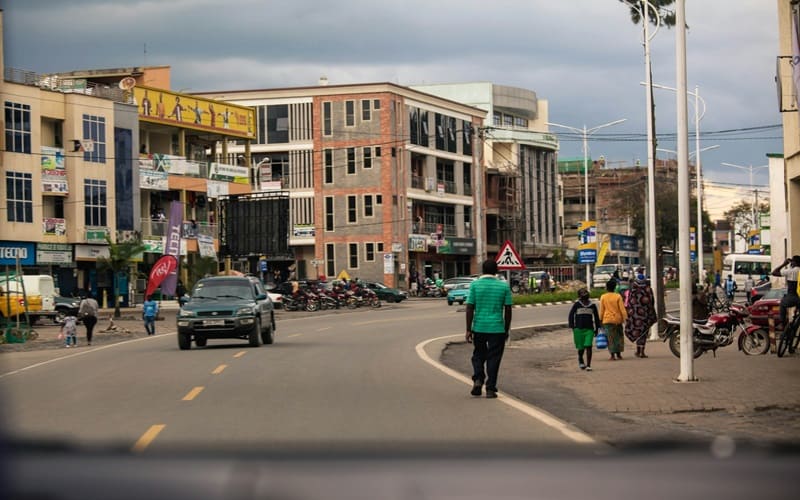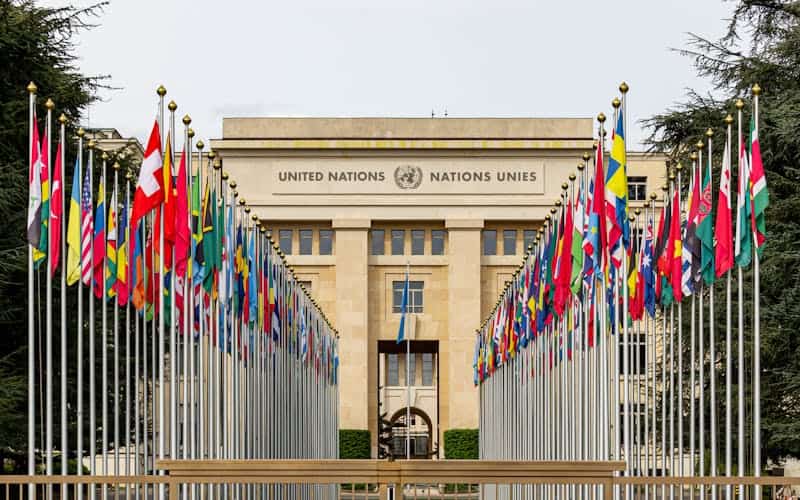The 2004 drama Hotel Rwanda brought international attention to the devastating Rwandan genocide in 1994. But how closely does the acclaimed film directed by Terry George portray the real events and people involved?
This thorough guide examines where Hotel Rwanda sticks to the facts and where it strays into historical fiction.
If you’re short on time, here’s a quick take: While Hotel Rwanda compresses some timelines and alters minor details, it largely presents an accurate portrayal of the genocide and heroism of hotel manager Paul Rusesabagina.
In this roughly 3000 word article, we’ll compare the movie’s timeline, characters, relationships, locations, and key events to historical accounts and survivors’ testimonies. We’ll fact-check the most significant scenes and analyze where creative license was taken for drama versus historical integrity.
Accuracy of Overall Timeline and Pacing
Condensing the lead-up to genocide
One of the challenges faced by filmmakers when adapting historical events into a movie is condensing a complex timeline into a cohesive narrative. When it comes to the movie “Hotel Rwanda,” the filmmakers had to compress the lead-up to the Rwandan genocide, which occurred over several years, into a two-hour film.
While some aspects may have been simplified or omitted for the sake of storytelling, the movie still captures the general atmosphere and tension that preceded the genocide.
The lead character, Paul Rusesabagina, played by Don Cheadle, provides a lens through which the audience experiences the escalating tension and the build-up to the violence.
While certain events may have been rearranged or combined, the film accurately portrays the increasing fear and division within Rwandan society as the genocide approaches.

Compressing the days of violence
The Rwandan genocide itself lasted for approximately 100 days, during which an estimated 800,000 people were brutally killed. Condensing this horrific period into a film presents significant challenges in terms of pacing and accurately depicting the scale of the violence.
In “Hotel Rwanda,” the filmmakers had to strike a balance between showcasing the horrifying events that unfolded during the genocide and maintaining a manageable narrative for the audience.
While some specific incidents may have been fictionalized or altered for dramatic effect, the movie accurately captures the chaos, violence, and desperation that characterized those dark days in Rwanda.
Balancing story pacing and facts
When adapting historical events into a film, there is often a delicate balance between maintaining accurate facts and ensuring an engaging and coherent story for the audience. “Hotel Rwanda” manages to strike this balance reasonably well.
The filmmakers brilliantly weave together personal stories with the larger historical context, creating a narrative that is both emotionally impactful and informative. While some specific details may have been altered or fictionalized, the film overall remains faithful to the events and themes of the Rwandan genocide.
It is important to note that while “Hotel Rwanda” provides a powerful portrayal of the genocide, it is still a fictionalized account. For a more comprehensive understanding of the events, it is recommended to refer to historical accounts, documentaries, and other reliable sources.
Fact vs Fiction in Lead Characters
Paul Rusesabagina’s true actions
One of the key characters in the movie Hotel Rwanda is Paul Rusesabagina, portrayed by Don Cheadle.
Rusesabagina was a real person who worked as a hotel manager during the Rwandan genocide in 1994. The movie depicts him as a hero who saved more than 1,000 people by providing them shelter in the hotel.
While Rusesabagina did play a crucial role in protecting and sheltering people during the genocide, some aspects of his actions portrayed in the film may have been embellished for dramatic effect.
According to various sources, Rusesabagina’s actual actions were less heroic than what is shown in the movie. However, it is important to note that the film is a work of fiction based on real events, and artistic license is often taken to create a compelling narrative.

Composite characters
In addition to Rusesabagina, the movie Hotel Rwanda features several other characters who are composites of real people. These characters serve as representations of the experiences and struggles faced by many during the genocide.
While their stories may not be based on specific individuals, they are meant to exemplify the courage and resilience displayed by countless Rwandans during that dark period of history.
Creating composite characters is a common practice in filmmaking, especially when dealing with complex historical events. It allows the filmmakers to capture the essence of the story and convey important messages without getting too bogged down in individual details.
Embellishments for main roles
Like many movies based on true events, Hotel Rwanda takes some creative liberties with certain aspects of the story. While the film aims to accurately portray the horrors of the genocide, there are instances where certain events may have been embellished for dramatic effect.
For example, the movie shows Rusesabagina negotiating with the Hutu extremists to secure the safety of the refugees in the hotel. While it is true that Rusesabagina used his connections and negotiation skills to protect the people in the hotel, the exact details of these negotiations may have been exaggerated or simplified for storytelling purposes.
It is important to approach historical films with a critical eye and understand that they are not always a completely accurate representation of the events they depict. However, movies like Hotel Rwanda can still serve as a powerful tool to raise awareness and spark conversations about important historical events.
Depth of Background and Context
When examining the historical accuracy of the movie Hotel Rwanda, it is important to delve into the depth of background and context surrounding the events depicted in the film. This includes understanding the ethnic tensions, the international community’s response, and the logistics and organization of the killings.
Explaining ethnic tensions
The movie Hotel Rwanda revolves around the genocide that occurred in 1994 in Rwanda, where an estimated 800,000 people were brutally killed over a period of 100 days.
The conflict stemmed from long-standing ethnic tensions between the Hutu and Tutsi populations. The Hutu majority had been marginalized for years under colonial rule, which created a deep sense of resentment and animosity.
It is important to note that the movie provides a simplified portrayal of the complexities of ethnic tensions. While the film focuses primarily on the perspective of the Tutsi community, it is crucial to acknowledge the experiences and perspectives of both sides.
The historical accuracy of the movie lies in its depiction of the extreme violence and the desperate struggle for survival faced by many Rwandans during this horrific period.
International community’s inaction
An important aspect of the historical context surrounding the events in Hotel Rwanda is the international community’s response, or lack thereof.
The film portrays the United Nations and other international organizations as failing to intervene effectively to prevent the genocide. This portrayal has been a point of contention among historians and scholars.
While it is true that the international community’s response was largely inadequate, it is crucial to understand the complexities and challenges they faced. The movie accurately highlights the bureaucratic hurdles, political considerations, and limitations of peacekeeping forces during such a massive humanitarian crisis.
However, it is important to conduct further research and examine different perspectives to gain a comprehensive understanding of the international community’s role.

Logistics and organization of killings
The movie Hotel Rwanda provides a gripping depiction of the logistics and organization behind the genocide. It shows the systematic planning, coordination, and execution of the mass killings. While the film captures the brutality and horror of the events, it is important to note that certain aspects may have been dramatized for cinematic effect.
To gain a deeper understanding of the historical accuracy, it is recommended to consult various sources, including survivor testimonies, academic research, and official reports. These sources provide valuable insights into the organization and extent of the atrocities committed during the genocide.
For more in-depth information and resources on the historical accuracy of Hotel Rwanda, consider visiting reputable websites such as History.com or BBC History.
Authenticity of Key Events and Locations
Siege of the Mille Collines Hotel
The movie Hotel Rwanda depicts the harrowing siege of the Mille Collines Hotel during the Rwandan genocide. While the film captures the essence of the events that took place, there are some discrepancies between the movie and historical accounts.
In reality, the siege lasted for several days, with Tutsi refugees seeking shelter at the hotel while facing constant threats from Hutu militias. The film portrays the heroism of hotel manager Paul Rusesabagina, who risked his life to protect the refugees, but it does condense the timeline for dramatic effect.
Attacks and displacement
The movie also portrays the widespread attacks and displacement that occurred during the Rwandan genocide. It accurately depicts the violence and brutality that unfolded during this dark period in history. However, it’s important to note that the film focuses on a specific narrative and does not capture the full extent of the atrocities committed.
The actual number of casualties and displaced individuals during the genocide is staggering, with estimates ranging from 800,000 to over a million. The film provides a glimpse into the horrors endured by the Rwandan people but cannot fully convey the scale of the tragedy.
Accuracy of Rwandan settings
The movie Hotel Rwanda was primarily filmed in South Africa due to logistical and safety concerns. While the filmmakers made efforts to recreate the Rwandan settings as accurately as possible, there are some differences between the film’s portrayal and the actual locations.
It’s important to acknowledge that recreating historical events and locations on screen can be challenging, and certain compromises may be necessary. Despite these differences, the film successfully captures the atmosphere and tension of the time, allowing viewers to empathize with the experiences of those affected by the genocide.
Analysis of Fact vs Fiction
When it comes to historical films, there is always a delicate balance between accuracy and creative license. “Hotel Rwanda,” the critically acclaimed movie based on the true story of Paul Rusesabagina during the Rwandan genocide, is no exception.
While the film captures the essence of the events that took place in 1994, it is important to analyze the extent to which it adheres to historical facts.
Prioritizing emotional truth
One aspect to consider when evaluating the accuracy of “Hotel Rwanda” is the prioritization of emotional truth over strict historical accuracy. The film aims to depict the horrors and human suffering endured during the genocide and the heroic actions of Rusesabagina.
While certain events may have been condensed or altered for dramatic effect, the emotional impact remains true to the experiences of those who lived through the tragedy.
It is worth noting that this approach is common in historical dramas, as filmmakers often prioritize conveying the emotional essence of a story rather than adhering to every minute detail. This allows the audience to connect with the characters and empathize with their struggles, ultimately creating a more powerful and memorable viewing experience.
Justifying creative license
Another aspect to consider when examining the accuracy of “Hotel Rwanda” is the justification for creative license. Filmmakers often take liberties with historical events in order to enhance the narrative and maintain the audience’s interest.
In the case of “Hotel Rwanda,” some minor inaccuracies or fictionalized elements may have been added to streamline the story or create a more compelling plot.
One example of creative license in the film is the portrayal of certain characters. While the central protagonist, Paul Rusesabagina, is based on a real person, some of the supporting characters may have been composite characters or fictionalized versions of real individuals. These alterations were likely made to simplify the narrative and focus on the key themes and messages of the film.
Rating overall faithfulness
When rating the overall faithfulness of “Hotel Rwanda” to historical events, it is important to consider the film’s intentions and the impact it has had on raising awareness about the Rwandan genocide.
While some specific details may have been altered or condensed for storytelling purposes, the film succeeds in capturing the essence of the genocide and shedding light on the atrocities that occurred.
It is crucial to approach historical films with the understanding that they are artistic interpretations rather than strict documentaries. “Hotel Rwanda” serves as a powerful reminder of the atrocities committed during the Rwandan genocide and the importance of acknowledging and learning from history.
For more information on the Rwandan genocide and its historical accuracy, readers can refer to credible sources such as United Nations and BBC News.
Conclusion
While Hotel Rwanda does take some creative license in its details, the core emotional journey and bravery displayed are firmly rooted in historical facts.
The acclaimed film succeeds in dramatizing the genocide and Rusesabagina’s heroism for mainstream audiences.
By analyzing the factual accuracy and necessary fiction, we gain a deeper appreciation for Hotel Rwanda’s balance of entertainment and education on a vital humanitarian issue.






